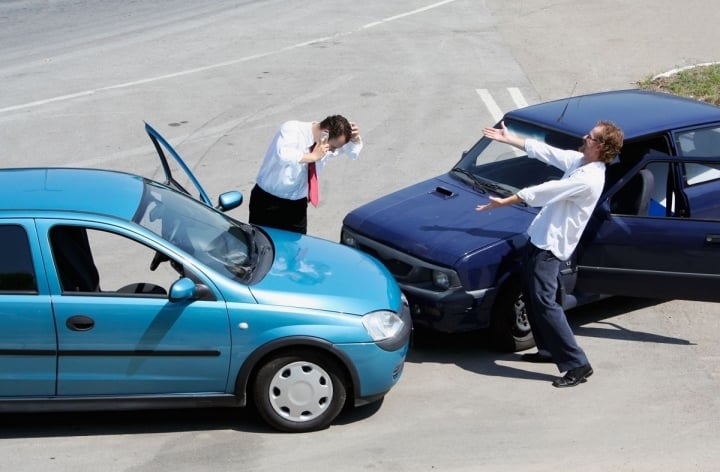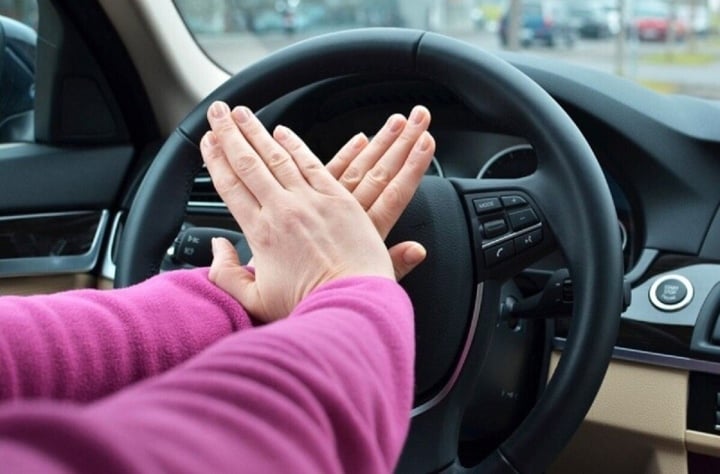Car loss of control is the main cause of serious traffic accidents, so what is the cause and how to handle it safely?
Loss of control is a phenomenon in which the driver loses control of the vehicle. Most of the time, loss of control occurs suddenly and unexpectedly, making it difficult for the driver to react or handle. Loss of control is one of the leading causes of traffic accidents.
Causes of car loss of control
There are many reasons why a car loses control, including objective and subjective factors. Usually, people divide the causes into two main groups: due to the driver making mistakes in driving techniques or due to incidents related to vehicle technical problems.
The causes of car loss of control are due to common driving techniques such as: not controlling speed, speeding, reckless overtaking, mistaking the gas pedal for the brake pedal, understeering or oversteering when cornering, not controlling the car well when going on slippery roads...

If the driver does not handle the situation calmly, the car can easily lose control and cause an accident. (Illustration photo).
The cause of car loss of control is due to common technical problems such as: brake failure, steering wheel deviation, steering rack deviation, sudden tire explosion, an important part in the steering system or operating system is damaged, stuck...
How to handle when the car loses control
When a car loses control, the more panicked the driver is, the more difficult it is to handle the situation. So the important thing to do is try to stay calm.
First, reduce the speed of the vehicle by slowly reducing the accelerator, shifting the vehicle to a lower gear to brake the engine. Note that you should only lightly press the brake, do not press the brake hard and continuously. Because if the vehicle is moving at high speed or the front/rear wheels are slipping, losing traction, braking hard will make the situation more dangerous such as causing the vehicle to lock the brakes, the wheels to lose traction, the vehicle to lose balance, leading to the vehicle skidding, spinning or flipping over...

Honking continuously and pulling over to the side of the road is one way to handle a car that loses control. (Illustration photo).
As the vehicle begins to slow down and the driver regains control, keep your eyes on the road and calmly steer the vehicle back into the lane. If possible, find a safe place to park the vehicle and decide what to do.
Important notes when handling car loss of control
In case the road ahead is not slippery, there are no obstacles, the vehicle has ABS, EBD, BA brake assist features… the driver can brake suddenly.
In case the road ahead is slippery or has obstacles, you should only brake lightly (do not brake suddenly) and shift to a lower gear to brake the engine.
The most dangerous situation is losing control in an area with many cars or on the highway. If this happens, the driver needs to immediately turn on the warning lights and honk continuously to warn those around. Perform combined actions using the brakes and shifting to a lower gear to regain control of the vehicle. In an emergency, the driver may have to be mentally prepared for a collision. It is best to steer the vehicle to collide or drive to places with the least damage, such as into a field or into a bush.
In case of brake failure, the driver must never put the car in neutral. Because shifting the car to neutral will cause the car to lose control. In case the car is going downhill, putting the car in neutral will cause the car to go faster.
How to limit car loss of control
You can limit the phenomenon of car losing control with the following experiences:
Hold the steering wheel correctly and sit comfortably to be able to handle flexibly in all situations.
Drive at the prescribed speed, do not speed or overtake as this can be dangerous. Especially keep a safe distance from vehicles moving in the same direction.
Slow down before entering a corner. When entering a corner, keep a steady grip on the steering wheel and be extremely careful. Do not accelerate too early, reduce the throttle suddenly or brake suddenly in the middle of the corner. Only use the cross-hand steering technique when driving at low speeds. When driving at high speeds, use the push-pull steering technique.
When driving in bad weather, foggy or slippery roads, drivers must not be complacent. Turn on the lights properly and keep a slow speed. Avoid sudden braking.
In addition to paying attention to driving techniques, you also need to pay attention to the condition of the vehicle. To ensure the vehicle operates smoothly and without problems, you need to have the vehicle checked and periodically maintained for the engine, gearbox, steering system, suspension system, tires, etc.
During the use of the vehicle, if you detect any unusual signs, especially in the steering system such as loose steering wheel, wobbly steering, uneven tire wear, engine fault light, transmission fault light on, etc., you should have the vehicle checked as soon as possible.
Source: https://vtc.vn/nhung-nguyen-nhan-khien-o-to-mat-lai-va-cach-xu-ly-an-toan-ar807105.html
Source link




![[Photo] General Secretary To Lam receives Vice President of Luxshare-ICT Group (China)](https://vphoto.vietnam.vn/thumb/1200x675/vietnam/resource/IMAGE/2025/11/15/1763211137119_a1-bnd-7809-8939-jpg.webp)
![[Photo] Prime Minister Pham Minh Chinh meets with representatives of outstanding teachers](https://vphoto.vietnam.vn/thumb/1200x675/vietnam/resource/IMAGE/2025/11/15/1763215934276_dsc-0578-jpg.webp)





























































































Comment (0)